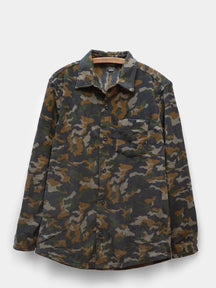
📸 by Alisha McDarris
There’s nothing better for the environment (and your bank account) than choosing used gear instead of new gear. Except for repairing the clothing and gear you already have in order to extend its life and keep it out of a landfill for a few extra years.
Doing so reduces the number of virgin materials required to create new gear, plus keeps materials that don’t readily biodegrade out of landfills. But how do you keep old gear in use when it’s starting to show its age? Repair it! Read on for a quick overview of what to do with tattered, torn, punctured, or peeling tents, jackets, sleeping bags, shoes and more!
Start with a Wash
The number one way to keep all kinds of gear in top shape: Wash it. Yes, everything from tents and sleeping bags to ski shells and insulated puffy jackets should all be washed on a regular basis. How often depends on how often you use gear and in what sorts of conditions, but after every four or five times your take your gear out, consider giving it a good cleaning. Do so more often if you’re taking extended excursions or trips to especially dusty or sandy places where dirt and grime can damage finishes, jam zippers, and gunk up fabric.
Do be careful to follow manufacturer instructions for individual items and choose a cleaner intended for outdoor gear. While regular laundry detergent is often fine for synthetic sleeping bags with no water-resistant coatings, down gear and technical materials, especially those designed to be waterproof like you’ll find in rain jackets and tents, require special detergent. Nikwax and GearAid both make environmentally-friendly gear-specific detergents.
Re-Waterproofing
Rain jackets, snow pants, tents and more naturally lose water-repellency over time, but that doesn’t mean it’s time to replace those items. On the contrary, after you wash your gear, simply use a wash-in or spray-on waterproofing product designed for water repellent items. Just make sure to follow the instructions on your product of choice (and the wash instructions for your individual gear) for maximum efficacy.
Seal Tent Floors and Seams
If the PU coating on your tent floor, fly, or seams is peeling or sticky, there’s an easy fix: peel off the pieces of coating or seam tape that are coming loose and apply tent fabric sealant over the areas that need sealed and re-waterproofed. Just let it dry and voila! Old, peeling fabric and seams are as good as new!
Zippers
We all have at least one zipper that’s always sticking or catching or doesn’t slide like it used to. While replacing zippers in gear is technical and time-consuming and is more easily sent to a gear repair shop to be replaced, you can also clean and lubricate sticking zippers with zipper lubricant. Just brush it on and you’re good to go.
Patch Holes
The number one gear repair you’re likely to have to make the most often–which is also, fortunately, the easiest to fix–is patching holes and small tears in the fabric of sleeping bags, puffy jackets, and tent flys. But just because your clothing or gear suffered a puncture doesn’t mean it’s reached the end of its usefulness. Just slap on a patch and you’re good to go.
GearAid, NoSo, and many more brands sell patch kits in rolls, sheets, or colorful designs so you can find one to fit your needs. There are even patches for mesh, so whether it’s a hole in your rain coat, tent floor, sleeping bag, or puffy, you can patch it, no sewing skills required.
Bottom Line
Outdoor gear repair and maintenance isn’t difficult. And it should definitely be part of your regular routine if you want to keep it in play and keep it out of a landfill. It will make all your beloved gear last longer, which means less synthetic material in the landfill, fewer new materials that need to be manufactured, and a whole lot of money that can stay in your wallet since you won’t have to drop a few hundred bucks on new stuff just because it got a little tear.
An extra bonus: you can buy used gear that might be in less-than-perfect condition with confidence, knowing you can repair little things that were enough to make others toss otherwise perfectly good gear to the curb.
So refresh your gear closet, don’t renew it, for the most sustainable gear imaginable.
Alisha McDarris is an outdoor journalist and co-founder of terradrift.com, a sustainable outdoor adventure blog and YouTube channel that exists to help more people get outside more often and do so more sustainably via gear reviews, how-tos, and more. She lives and repairs her own gear in Ogden, Utah. Follow Terradrift on Instagram.








